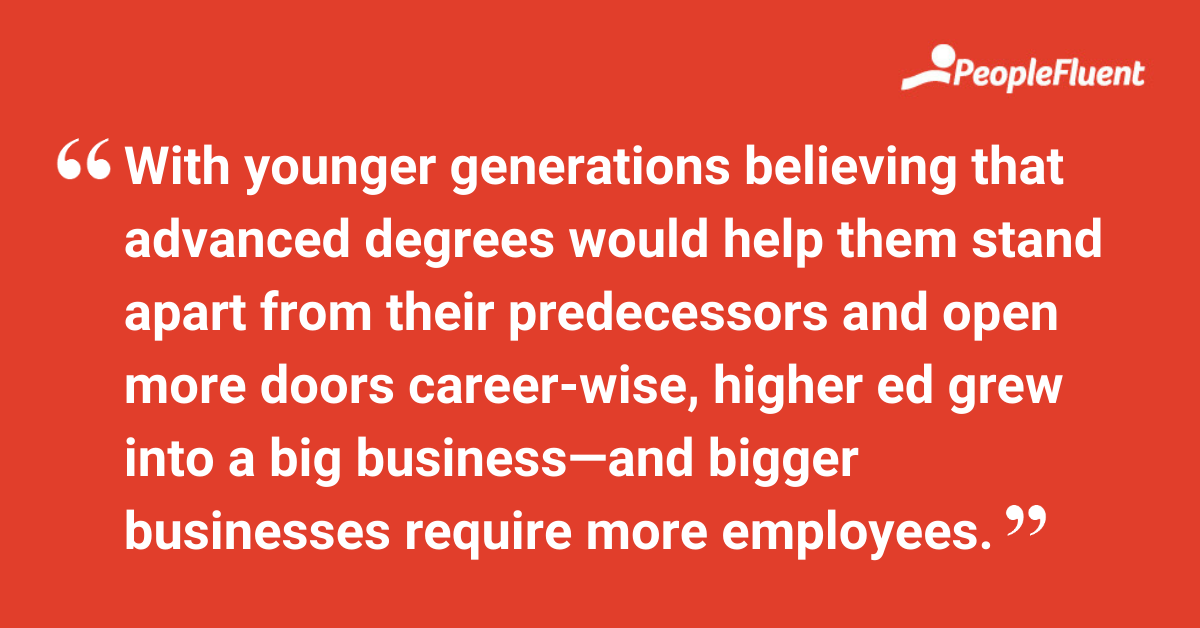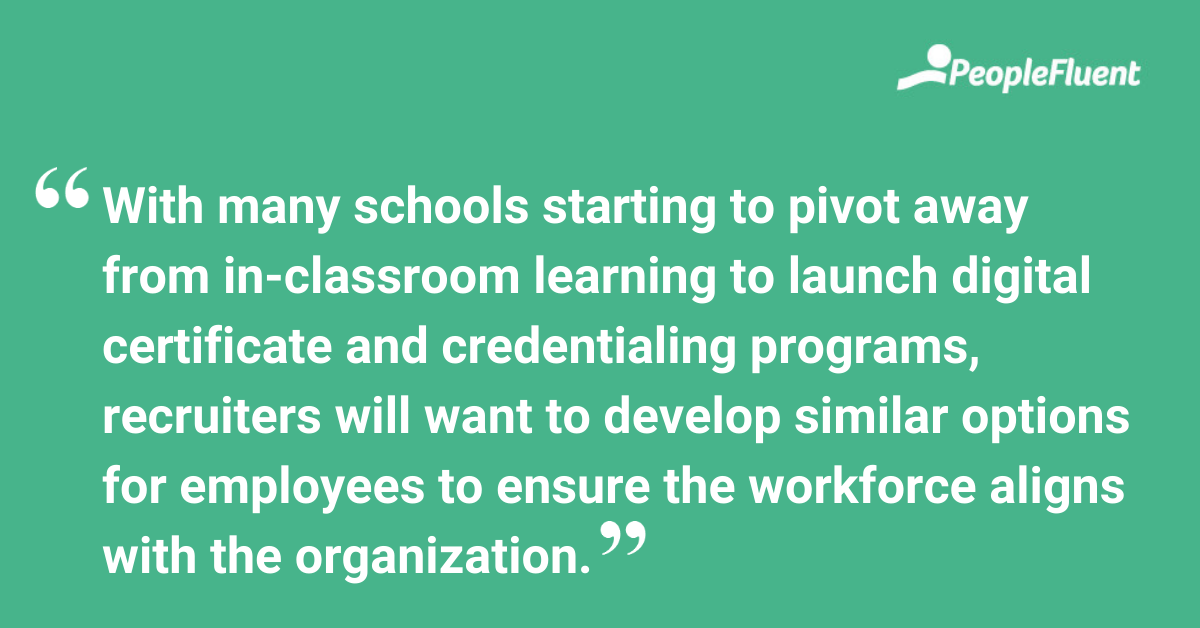Published: Oct 5, 2021Time to read: 5mins Category: Insights
Reopening, Rehiring, Reconsidering: What’s Next for Hiring in Higher Ed
All over the world, universities are redefining how they teach. But it’s more than just a shift from in-person to blended education! With the pandemic having changed the game possibly forever, hiring staff in higher education requires a whole new mindset. Do you have what it takes to get it right?
After years of exponential growth, the higher education sector nearly ground to a halt in the face of COVID-19. College and university campuses shut down, sending local students home to their families and trapping international students in a state of unenviable limbo. While professors scrambled to take their syllabi virtual, higher ed institutions fought to justify costs to current and prospective academics.
By September 2020, schools like San Francisco State University announced layoffs affecting nearly 8% of admin, IT, and operations staff. Even with budget cuts, lower enrollment rates, and the uncertain nature of the pandemic, higher ed fights on, faced with rethinking its role as both an employer and industry.
As such, higher ed talent acquisition professionals need to pay careful attention to what’s happening with hiring employees as well as recruiting students. Here’s a look inside!

RELATED READING | ‘Increase Hiring Efficiency With These 4 Best Practices’
Private vs Public Education
To understand the full impact of the global health crisis, we need to acknowledge where higher ed stood in the pre-pandemic years.
Once seen as an aspirational opportunity, obtaining higher ed degrees became the norm in recent years. So common, in fact, that master’s degrees were starting to outpace undergraduate education. According to one investigation, from 1991 to 2019, the number of master’s degrees awarded rose by 143%. That’s 70% faster than bachelor’s degrees and 84% faster than doctorates!
With younger generations believing that advanced degrees would help them stand apart from their predecessors and open more doors career-wise, higher ed grew into a big business—and bigger businesses require more employees. However, the rising costs associated with tuition, room and board, and inflation, meant many institutions—public and private—changed their staffing models, moving from fixed to variable.
And then there’s staff and faculty. A recent study by the American Association of University Professors found that not only have wages fallen, but more than 20% of institutions reported terminating or not renewing contracts in the last year. According to data from the Bureau of Labor Statistics, the losses in higher ed aren’t the same across the board, with public colleges and universities laying off fewer workers in 2020 than they did in 2019. Survey data reinforces this, showing only a 4.5% layoff rate in public education for 2020 while the “quit” rate dropped by 27%. On the flip side, the layoff rate for the private sector skyrocketed above 27%, while the quit rate averaged about 3%.
Clearly, there’s a divide, and it’s brought higher ed to a crossroads.

Hiring in Higher Ed: What’s to Come
Even with public institutions faring better than private ones, there are no guarantees for higher ed at this moment.
From a hiring perspective, the losses between teaching and support staff and students have many folks worried about long-term ramifications on quality and value. COVID-19 continues to plague campuses attempting to bring students back full-time and return to some semblance of normalcy. Many remain uncomfortable being in person, wrestling with justifying the cost of virtual education against a possible diminishing return on investment. Wall Street Journal reports that men are already abandoning higher ed in droves, regardless of race or income level.
Disparities have been an issue for higher ed for some time, and recent cuts to salaries and jobs could undo advancements in equity. Recruiters have to grapple with all of these factors at once. Lower enrollment means fewer positions to fill, fewer positions to fill means increased demands on qualifications, increased demands on qualifications means a smaller talent pool, and the cycle repeats…

HOT TOPIC | ‘4 Practical Ways to Recruit Diverse Talent’
Educating for Skills Beyond School
Judy D. Olian, President of Quinnipiac University, posits that “skill renewal” will take precedence in our newly emerging reality, helping to promote employee engagement and avoid feelings of stagnation.
To address this, recruiters need tools that encourage upskilling and reskilling as public and private colleges and universities reconsider their “customer base.” With many schools starting to pivot away from in-classroom learning to launch digital certificate and credentialing programs, recruiters will want to develop similar options for employees to ensure the workforce aligns with the organization.
Pointing to two recent examples, Olian explains how higher ed recruiting starts to take a different shape, expanding beyond the hallowed walls on-campus to partner with external employers, building reciprocal relationships that provide for today’s employees and students alike.
Though the college experience is likely to evolve, there’s no doubt the need for education—both public and private—remains essential. Navigating this next chapter will take innovation from institutions and the recruiters who help keep schools up and running, from the language lab to the dining hall, online and in-between.
MORE FROM THE BLOG | ‘Upskilling vs. Reskilling: Understanding the Differences and Their Role in Talent Mobility’
Futureproof Your Hiring Process
Need help modernizing your hiring efforts? Attract the right people at the right time with our short guide, ‘6 Strategies for Attracting Top Talent’. Alternatively, reach out—we would love to help!